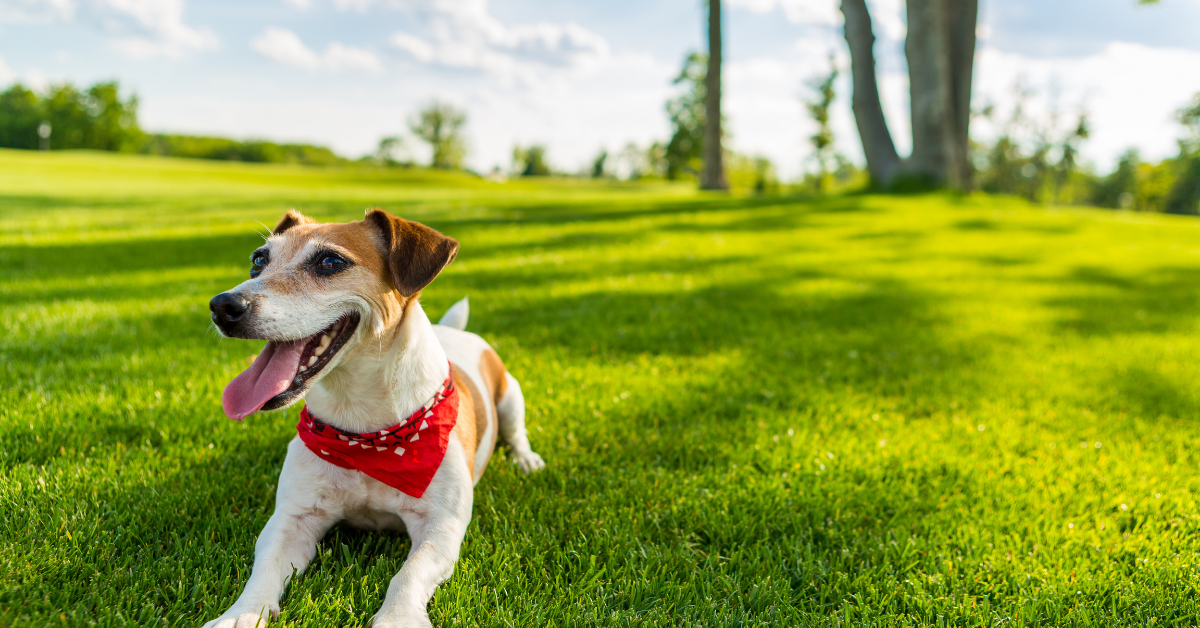
Though hot spots on dogs can occur throughout the year, they're more prevalent in summer than at any other time. They're so associated with the season that some people even refer to them as summer sores.
It is the time of year, after all, when allergies flare up, biting insects come out of hiding, and extreme heat and humidity are more common than not. All of which contribute to the formation of hot spots on dogs.
But there are steps you can take to protect your pup from hot spots, particularly during the summer months.
Before we look at how to prevent hot spots on dogs in summer, let's look at what hot spots are and what causes them.
The scientific name for hot spots is acute moist dermatitis and it's one of the most common dog skin problems.
As the scientific name suggests, dog hot spots are characterized by moist patches of red-colored skin that are inflamed and itchy. (They're also hot to the touch, thus the "hot" in hot spot.) They most frequently occur on your dog's head, neck, hips, and legs.
Hot spots on dogs start as small scratches or cuts that itch. To themselves of the discomfort, dogs scratch, bite, and lick at the area. But, the more they do this, the larger the spot gets. Inevitably, a secondary infection (either bacterial or yeast) develops. Which makes everything even itchier.
It's a cycle that once started continues unending unless you put a stop to it.
Many things can trigger the cycle. Sometimes the initial scratch is from an outside source like a splinter or thorn. Other times, it's self-inflicted. This is particularly true if your dog has allergies that cause his skin to be itchy. Flea bites and pollen allergies are common initiators of hot spots on dogs.
Another common cause of hot spots is matted fur, which is notorious for harboring moisture.
Now that we understand what hot spots are and what causes them, it's easy to see why they're more prevalent in summer.
Fleas, pollen allergies, humidity? All are things your dog is more likely to encounter in the summer.
But your dog doesn't have to suffer. Here are a few ways to prevent hot spots on dogs.
An allergic reaction to flea bites is one of the leading causes of hot spots on dogs. The best way to protect your pup is simply to ensure he doesn't get bit. And the best way to do that is to give him regular flea treatments.
No moisture, no hot spots. To give your pup the best chance of not developing summer sores, ensure he's completely dry after swimming or a bath. There's already lots of humidity in the air in the summer, why add to the mix by letting excess moisture sit on his skin?
A good shake or two isn't enough to get rid of all those water droplets. If you're heading anywhere there might be water, keep an extra towel on hand so you can ensure his skin is fully dry.
Splashing around in the backyard pool or a nearby lake or pond with your dog? What's more fun! But your dog may be taking home more than just great memories.
Bacteria and algae are often lurking in communal waters. To rid him of anything that could contribute to hot spots, you'll want to give him a bath using shampoo that's designed to kill off anything harmful.
One of the easiest ways to prevent hot spots on dogs is with regular grooming. This is particularly true if you have a long-haired breed, as grooming is the best way to prevent mats from forming. By keeping on top of your dog's grooming routine, you'll be able to spot mats as soon as they develop so you can remove them before they cause any problems.

Hot spots are caused when your dog's immune system goes into overdrive as a reaction to an allergen (flea bites, pollen, dust, etc) or itchy skin caused by things like matted hair or a yeast or bacterial infection.
By giving your pooch a supplement that's designed either to strengthen his immune system (like Veterinary Formula Clinical Care's Immune Defense) or promote healthier skin (like Veterinary Formula Clinical Care's Skin Health & Itch Relief), you give him a head start. The next time he's exposed to something he's allergic to, supplements that have natural anti-inflammatories in them (like the three omegas) can ease his reaction, making the development of a hot spot less likely.
Not everyone has time to play with their dog every day. But a dog left alone or with nothing to do for too long can become so bored he takes to self-harm as a form of stimulation. And that can lead to your dog's hot spot.
If you think your dog is scratching out of boredom (or stress), try to increase his daily exercise or find time to play more often. If you don't have the time, give him puzzle toys or puzzle feeders to add some mental stimulation to his day.
Product Picks